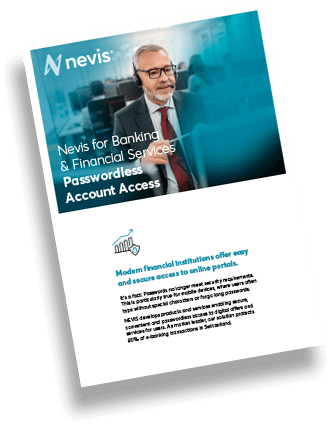
There are many options available if you are looking for a card with low interest rates. This article will provide information about Unsecured, Revolving, and 0% introductory credit cards. We'll also talk about the Petal 2 Visa. You can learn more about these cards to see how they can benefit your financial situation. We will also be discussing 0% introductory credit building cards. This article will help you apply for a creditcard.
Unsecured credit cards
Unsecured credit cards are available for those with less than perfect credit. A fair score depends on which credit-scoring model you use and the company you work for, and can be anywhere from 580 to 669. An unsecured card is possible even if you have a credit score below these thresholds. Unsecured cards often offer rewards and don't require an annual fee. Before you apply for a card, make sure to verify your credit score. This will help you narrow down your options and determine what features are most important to you.

0% introductory rate credit building cards
A 0% introductory credit card can be a good option for those with poor credit. However, you should use them wisely. Late payments will result in an increase in your APR. Your introductory period will also end soon. Once the 0% period is over, your balance will be charged at the regular APR. Personal loans are the best option for those who need a long-term debt solution.
Revolving credit cards
Customers can incur debt with a revolving credit card and charge it to their account. The borrower is not required to pay the outstanding balance each month. Instead, they can use the funds from their account for other purchases. Popular types of accounts include revolving credit cards. For more information on revolving credit cards, click here. We've broken down some of the benefits to revolving savings accounts. These are just a few examples.
Petal 2 Visa
The Petal 2 Visa Credit Building Plastic Card is a partnership with WebBank to analyze and improve your financial history. This credit card is a great option for those with poor credit scores. It allows you to buy below your credit limit, and reports your activity to all three major credit bureaus. Petal doesn't require a security deposit. You may already have an active bank account and can start building your credit immediately.

Self Visa
Self Visa credit construction card could be the best option for you if your need is to build credit. You don't need to deposit money into your bank account in order to get this card. It will improve your credit score. You can make timely payments to the card. This will complete your credit report. A secured card will give you a credit score that is almost twice the speed. Here are some tips that will help you improve your credit score when using this credit builder card.
FAQ
Which age should I start investing?
An average person saves $2,000 each year for retirement. Start saving now to ensure a comfortable retirement. You might not have enough money when you retire if you don't begin saving now.
Save as much as you can while working and continue to save after you quit.
The sooner that you start, the quicker you'll achieve your goals.
When you start saving, consider putting aside 10% of every paycheck or bonus. You might also consider investing in employer-based plans, such as 401 (k)s.
Contribute only enough to cover your daily expenses. You can then increase your contribution.
How can I invest and grow my money?
Learning how to invest wisely is the best place to start. You'll be able to save all of your hard-earned savings.
You can also learn how to grow food yourself. It isn't as difficult as it seems. You can easily plant enough vegetables for you and your family with the right tools.
You don't need much space either. Make sure you get plenty of sun. Try planting flowers around you house. They are simple to care for and can add beauty to any home.
Finally, if you want to save money, consider buying used items instead of brand-new ones. Used goods usually cost less, and they often last longer too.
Which investments should a beginner make?
Investors who are just starting out should invest in their own capital. They need to learn how money can be managed. Learn how to prepare for retirement. How to budget. Find out how to research stocks. Learn how you can read financial statements. How to avoid frauds Learn how to make sound decisions. Learn how to diversify. Learn how to guard against inflation. Learn how to live within your means. How to make wise investments. Have fun while learning how to invest wisely. You will be amazed at the results you can achieve if you take control your finances.
How long does a person take to become financially free?
It depends on many things. Some people are financially independent in a matter of days. Others may take years to reach this point. But no matter how long it takes, there is always a point where you can say, "I am financially free."
It's important to keep working towards this goal until you reach it.
What are the 4 types?
The four main types of investment are debt, equity, real estate, and cash.
It is a contractual obligation to repay the money later. It is commonly used to finance large projects, such building houses or factories. Equity is when you buy shares in a company. Real estate is when you own land and buildings. Cash is what you have now.
When you invest in stocks, bonds, mutual funds, or other securities, you become part owner of the business. You are a part of the profits as well as the losses.
Statistics
- They charge a small fee for portfolio management, generally around 0.25% of your account balance. (nerdwallet.com)
- Most banks offer CDs at a return of less than 2% per year, which is not even enough to keep up with inflation. (ruleoneinvesting.com)
- Some traders typically risk 2-5% of their capital based on any particular trade. (investopedia.com)
- 0.25% management fee $0 $500 Free career counseling plus loan discounts with a qualifying deposit Up to 1 year of free management with a qualifying deposit Get a $50 customer bonus when you fund your first taxable Investment Account (nerdwallet.com)
External Links
How To
How to Save Money Properly To Retire Early
Retirement planning is when your finances are set up to enable you to live comfortably once you have retired. It is where you plan how much money that you want to have saved at retirement (usually 65). Also, you should consider how much money you plan to spend in retirement. This includes hobbies, travel, and health care costs.
You don't have to do everything yourself. Many financial experts can help you figure out what kind of savings strategy works best for you. They'll examine your current situation and goals as well as any unique circumstances that could impact your ability to reach your goals.
There are two types of retirement plans. Traditional and Roth. Roth plans allow for you to save post-tax money, while traditional retirement plans rely on pre-tax dollars. The choice depends on whether you prefer higher taxes now or lower taxes later.
Traditional Retirement Plans
A traditional IRA allows pretax income to be contributed to the plan. You can make contributions up to the age of 59 1/2 if your younger than 50. If you want your contributions to continue, you must withdraw funds. You can't contribute to the account after you reach 70 1/2.
If you've already started saving, you might be eligible for a pension. These pensions vary depending on where you work. Employers may offer matching programs which match employee contributions dollar-for-dollar. Others provide defined benefit plans that guarantee a certain amount of monthly payments.
Roth Retirement Plans
Roth IRAs do not require you to pay taxes prior to putting money in. When you reach retirement age, you are able to withdraw earnings tax-free. However, there may be some restrictions. For medical expenses, you can not take withdrawals.
A 401 (k) plan is another type of retirement program. These benefits are often offered by employers through payroll deductions. Employees typically get extra benefits such as employer match programs.
401(k), plans
Employers offer 401(k) plans. You can put money in an account managed by your company with them. Your employer will automatically contribute a percentage of each paycheck.
You decide how the money is distributed after retirement. The money will grow over time. Many people want to cash out their entire account at once. Others may spread their distributions over their life.
You can also open other savings accounts
Some companies offer different types of savings account. At TD Ameritrade, you can open a ShareBuilder Account. You can use this account to invest in stocks and ETFs as well as mutual funds. You can also earn interest for all balances.
Ally Bank allows you to open a MySavings Account. You can deposit cash and checks as well as debit cards, credit cards and bank cards through this account. This account allows you to transfer money between accounts, or add money from external sources.
What to do next
Once you know which type of savings plan works best for you, it's time to start investing! Find a reputable investment company first. Ask friends or family members about their experiences with firms they recommend. For more information about companies, you can also check out online reviews.
Next, decide how much to save. This is the step that determines your net worth. Your net worth is your assets, such as your home, investments and retirement accounts. It also includes debts such as those owed to creditors.
Divide your networth by 25 when you are confident. That number represents the amount you need to save every month from achieving your goal.
For instance, if you have $100,000 in net worth and want to retire at 65 when you are 65, you need to save $4,000 per year.